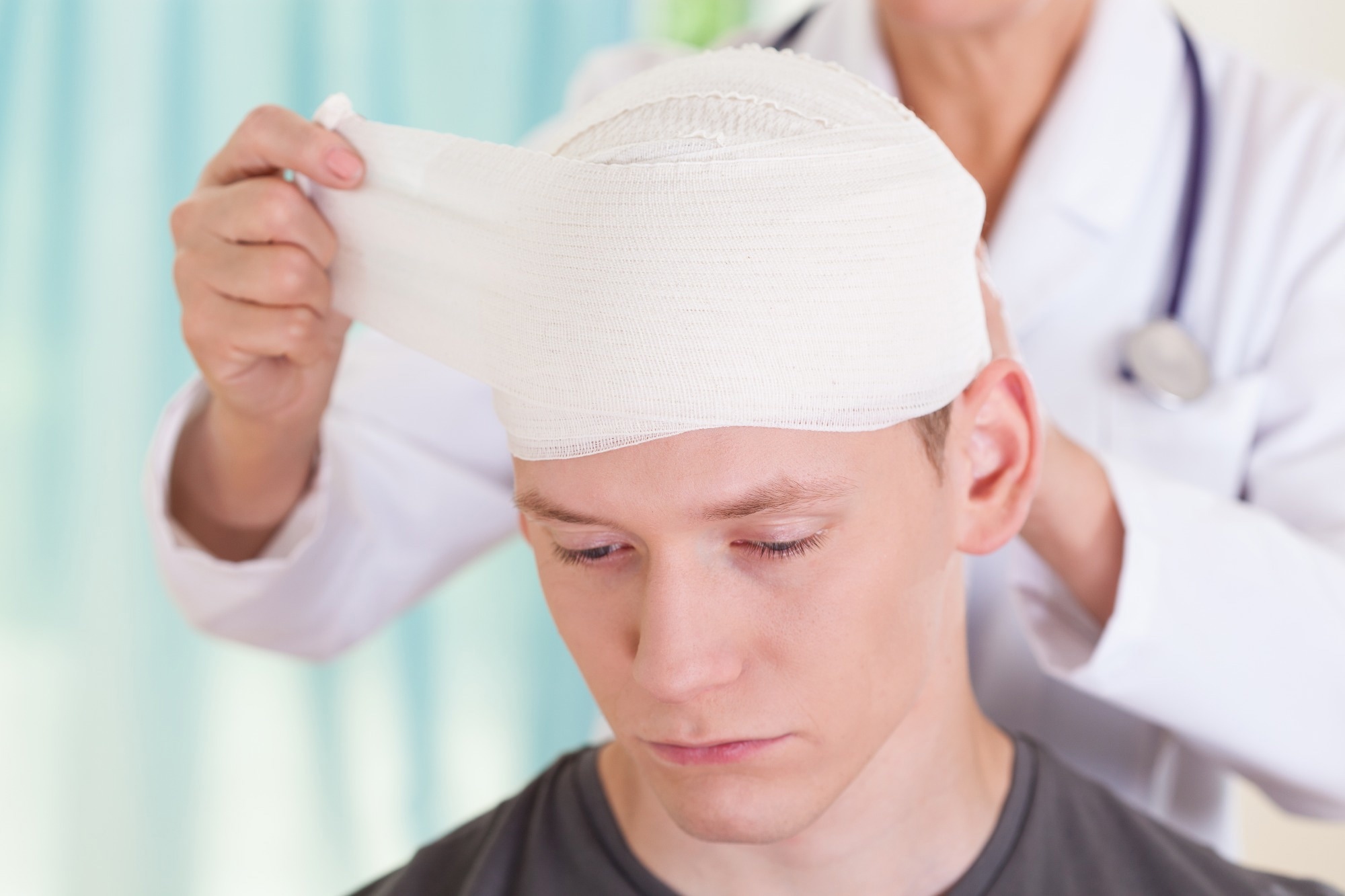In a recent study published in Scientific Reports, a group of researchers analyzed the epidemiology, characteristics of head injuries, and gender differences in the Glasgow Outcome Scale (GOS) among pedestrians involved in motor vehicle accidents in northern Iran.
 Study: Epidemiology of head injuries in pedestrian-motor vehicle accidents. Image Credit: ESB Professional/Shutterstock.com
Study: Epidemiology of head injuries in pedestrian-motor vehicle accidents. Image Credit: ESB Professional/Shutterstock.com
Background
As the most vulnerable road users, pedestrians show significant gender differences in injury risk and severity. In the United States (US), pedestrian fatalities have been increasing despite safety efforts, with 6,227 deaths in 2018, representing 15% of all motor vehicle accidents.
Canadian data indicates that 25% of young pedestrians are injured in such accidents. In Iran, pedestrian deaths account for nearly 20% of all traffic fatalities, with the highest rates in Tehran, Mazandaran, and Guilan provinces. This increase in pedestrian injuries and fatalities highlights the socio-economic impact of traffic accidents.
Traumatic brain injury (TBI), a common result of these accidents, leads to both immediate and long-term health issues. Studies show varied injury patterns by age and location, with head injuries being the most common cause of pedestrian deaths.
The Glasgow Coma Scale and Outcome Score are critical tools for assessing and classifying TBI severity. Despite global efforts to enhance pedestrian safety, pedestrian-motor vehicle accidents (PMVAs) continue to rise, with head injuries being the predominant cause of fatality.
Further research is needed because despite increasing pedestrian safety efforts, the rate and severity of pedestrian injuries, particularly head injuries, continue to rise.
About the study
The present analytical study was conducted in northern Iran, focusing on PMVAs and associated head injuries. Data from 917 eligible injured pedestrians aged 15 years and above were collected from May 2017 to April 2020. The study utilized two primary data sources: the Trauma System database and the Hospital Information System (HIS).
Inclusion criteria encompassed pedestrians involved in PMVAs within Guilan province, while cases with incomplete data were excluded. Data collection was executed by trained medical interns, who extracted relevant information on demographic, geographical, transfer, clinical characteristics, and GOS scores from the aforementioned databases.
The study's methodology adhered to ethical guidelines set by the Guilan University of Medical Sciences, with informed consent waived due to the study's retrospective design. Data analysis was performed using SPSS software, focusing on variables such as age, gender, collision details, clinical symptoms, treatment types, and GOS at discharge.
Study results
The study’s cohort had an average age of 47.55 years, with males constituting 81.31% of the injured pedestrians. Most accidents occurred in urban settings, predominantly on streets and alleys.
Upon hospital admission, vital signs such as blood pressure, heart rate, and oxygen saturation were recorded. The majority of patients (94.03%) were fully conscious, with common symptoms including headache, nausea or vomiting, and head and face injuries. Therapeutic interventions mainly involved outpatient treatment, airway control, and resuscitation.
Computed tomography (CT) scan results revealed that 83.07% of the pedestrians exhibited no acute pathological lesions. The most frequent brain injuries identified were contusions, subarachnoid hemorrhages, and skull fractures. Concurrent injuries were common, with lower limb and pelvic injuries being the most prevalent.
Regarding the GOS, most participants, both men and women, were discharged with a 'good recovery' status. However, a statistically significant gender difference was observed in the GOS scores, with men experiencing a higher rate of severe disabilities.
The study highlighted the prevalence of head injuries and the severity of outcomes in PMVAs. Male pedestrians were found to be at a higher risk for more severe accidents and worse GOS outcomes. The findings underscored the importance of preventive strategies to mitigate the risks and consequences of such accidents.
In terms of geographical distribution, most accidents occurred in Rasht city, with urban areas being more prone to such incidents.
The study also delved into the various treatments administered to the victims, indicating a predominance of non-invasive management in most cases. The presence of multiple injury types and the GOS findings suggested the need for comprehensive approaches in emergency response and long-term rehabilitation.
The research also shed light on the demographic characteristics of the affected population, with significant insights into age and gender distributions. These findings are crucial for tailoring public health interventions and road safety measures to the most vulnerable groups.
The study provided valuable data on the epidemiology of pedestrian injuries in PMVAs, highlighting critical areas for improvement in prevention, emergency care, and rehabilitation services.
Conclusions
To summarize, the study on pedestrian head injuries revealed that most brain CT scans showed no acute lesions, with the most common injuries being contusions, SAH, and skull fractures. These findings suggest lower severity PMVAs in urban areas, although injury severity was not extensively evaluated.
The majority of patients had mild injuries, indicated by normal Glasgow Coma Scale scores and vital signs, with initial symptoms often including headache and nausea.
Concurrent lower limb and pelvic injuries were common, reflecting similar patterns in other studies. The study noted the potential for newer vehicle designs to reduce injury severity. Mortality rates were lower than in some international studies, likely due to the urban setting of most accidents.
Treatment predominantly involved outpatient care, airway control, and resuscitation. Men had higher rates of mortality and severe disability. Overall, the study underscores the need for improved safety strategies to reduce pedestrian injuries in traffic accidents.